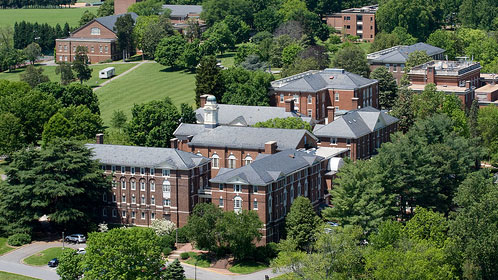One of the most significant stories in recent years within higher education is the closing of Sweet Briar College. While small colleges do struggle and close, Sweet Briar’s closing is somewhat unusual because the institution still had a sizable endowment. Yet, officials determined that with an inevitable outcome that the best course of action was an orderly shutdown. But how did we get here? What are the challenges facing Sweet Briar College?

Sweet Briar’s leadership cited a declining interest in women’s colleges and liberal arts colleges as a major problem for the institution. In addition, they believed today’s students are less inclined to attend rural institutions.
In order to understand why some colleges seem to thrive and others face challenges, you have to consider an institution’s competition and environment.
Single-gendered colleges are a prime example of how changes within a market niche can dramatically influence the future of an institution.
Thinking about Sweet Briar’s situation, there are only so many students for them to recruit.
For example, let’s put some numbers to this. If there are 20% of students in the region interested in attending a rural institution, 5% of students interested in a liberal arts college, and 1% open to attending a women’s college, there is almost no market for Sweet Briar to recruit students. The pool of potential students is less than 1% as not everyone interested in a women’s college is also open to a liberal arts or rural institution.
Since the early 1970s, the number of women’s college have dropped from 300 to around 50.
In light of the decline of interest in all-female higher education, many other non-selective women’s colleges have gone co-educational or merged with larger, more financially sound institutions to avoid Sweet Briar’s fate.
Sweet Briar also is challenged because of its limited prestige and financial standing that means the prospect of operating with ongoing deficits is not sustainable.
The result is that the college has no choice but to transition to a different market niche with more prospective students or close.
One of my concerns about the situation facing Sweet Briar and other similarly struggling institutions is the impact on the institutional diversity of American higher education.
If women’s colleges are forced to move into a different market or close, the diversity of our higher education system declines.
Despite the growth of higher education over the last half of the twentieth century, researchers have found that the broader environment has led to a decline of institutional diversity.
Now, some might argue that this is what happens in a free economy. If a business no longer offers a product that people are interested in, they create a new product line or close. Why should colleges be any different?
This mindset among policy makers and others that argue for a business-oriented approach helped create the environment that forces institutions like Sweet Briar to close.
Yet, this fundamentally misunderstands the strength of American higher education. Our system has exhibited more institutional diversity than any other country and many observers consider this one of the reasons for the great success of American higher education.
The vast range of institutional types allows higher education to serve a variety of needs for the country. The complexity of demands that society has for higher education could not be satisfied with a small number of institutional types.
Colleges and universities with different missions improve the effectiveness and efficiency of higher education. Trends like the challenges facing Sweet Briar College will result in less institutional diversity. I believe this is one of the greatest threats and implications from the Sweet Briar situation and I worry about what this means for all of American higher education.

